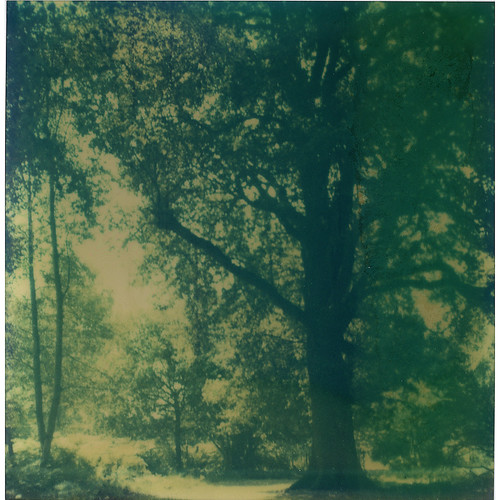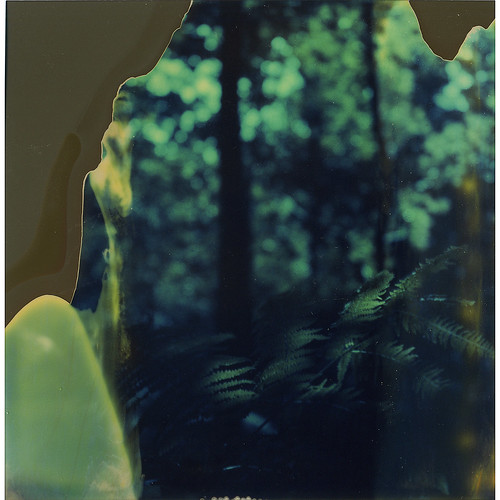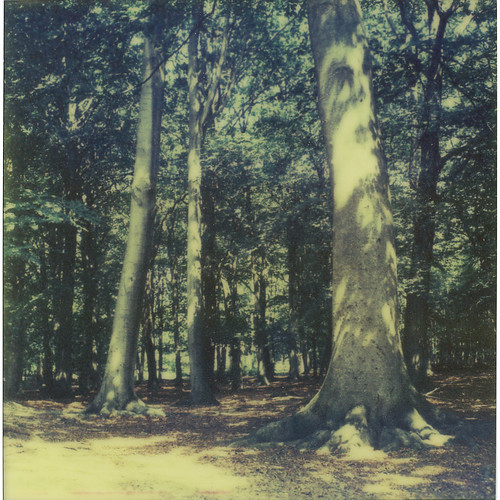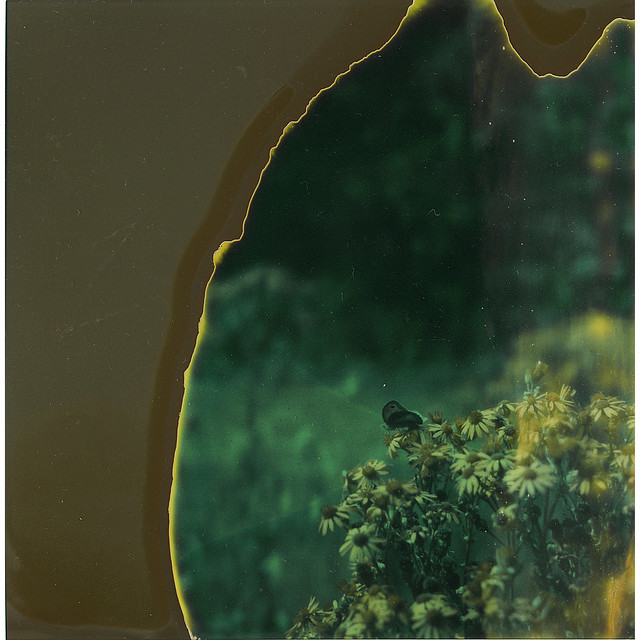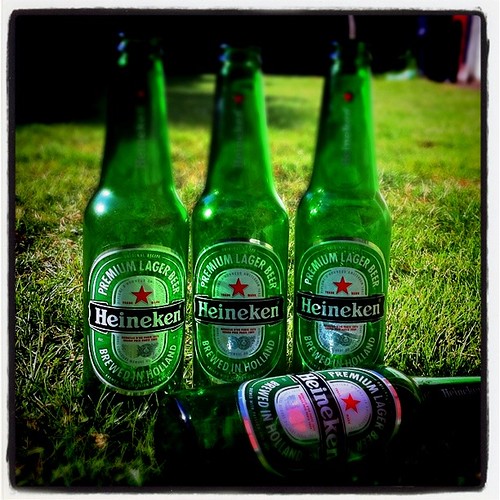 |
| 'Metallica' cover. |
The distinctive, haunting picked introduction bleeds from the speakers.
The dual guitars are suddenly backed up by a thumping, steady bass drum beat and a thick, dense bassline.
The guitars pick up, distorted and muted.
The tension builds, a little at first.
Then harder, more drums, more guitar.
Then, at 55 seconds in the song explodes to life, the swagger and groove opening up "Enter Sandman", the first song on Metallica's 5th album; simply named 'Metallica'.
"Enter night, exist light..."
It's 20 years since this happened for the first time. This album, that was a major milestone in the life of my generation, is 20 years old. August 12th 1991 was the date when "The Black Album", as it became known due to its almost pure black cover, hit the shops and was feverishly purchased by metal-heads the world over.
Almost 3 years to the day since '...And Justice For All', the buzz around the new album had been growing since the summer of 1990 when word hit the international music press that the writing process had started on what was promising to be the biggest Metallica album to date. Metallica's fan base had been swelled by the success of the previous 4 albums; their 1983 début 'Kill 'Em All'; 1984's follow up 'Ride The Lightning'; the 1986 masterpiece 'Master Of Puppets' and the afore mentioned 'Justice' in 1988; the band were growing as a creative unit with 'new boy' Jason Newsted now at home in the bassist spot previous filled by the late, great Cliff Burton.
Singer/guitarist James Hetfield and fellow founder, drummer Lars Ulrich, spent the summer of 1990 writing the basis of the songs that would form the core of the album. Contributions from the other member were also included - lead guitarist Kirk Hammett is listed a co-writer on 4 of the tracks and Newsted on 1 - but the majority of the material from the sessions had the unmistakable sound of the two friends from LA.
"Little whispers circle around your head..."
In late September 1990, the band entered the studio to record the demos for the album with new producer Bob Rock. This meant it was the first time since their 1983 début that the production would not be overseen by Danish engineer Flemming Rasmussen. Rasmussen's hard hitting, abrasive production had helped to define the crunching yet fluid thrash metal sound that had been the Metallica cornerstone. Bob Rock, on the other hand, was best known for his recent work with glam metal Motley Crue, the AOR sounds of Bon Jovi and the classic rock of Aerosmith. His style was more orientated towards happier, more pop sounds than the darkness associated with thrash. The main contemporary thrash metal bands of the time - the other 3 within the "Big Four" - Anthrax, Megadeth and Slayer had all recently released hard hitting new albums that were shaping a new direction for the genre ('Persistence Of Time', 'Seasons' In The Abyss' and 'Rust In Peace' respectively), backing up the well worn path of brutal riffing with a more refined song writing. It was this new direction the Metallica sought to explore and exploit.
Recording sessions proper started in October at One on One Studios in North Hollywood. In a recent interview with Metal Hammer magazine, Rock looked back on the making of the album, saying:
"...they had broken through to one level, but they still weren’t on mainstream radio. When they came to me, they were ready to make that leap to the big, big leagues" Bob Rock
Rock had expected an easy album to produce, much along the lines of his work in Bon Jovi, and to a lesser extent Crue. Instead, he had frequent run-ins with the band, expressing his belief that Hetfield could write "better lyrics" than the ones brought to the sessions.
"It wasn’t a fun, easy record to make. Sure, we had some laughs, but things were difficult. I told the guys when we were done that I’d never work with them again. They felt the same way about me." Bob Rock
The band, and Rock, wanted the sound to be more cohesive, more live, more earthy. This meant they recorded as a band, not separately, or hidden away form each other in different rooms; as James Hetfield was quoted in a Guitar World interview:
"What we really wanted was a live feel. ...I wanted to try playing as a band unit in the studio. It lightens things up and you get more of a vibe." James Hetfield
Many songs were re-recorded and re-recorded to create the final versions. Layers of guitar and bass were placed on top of each other to magnify the wall-of-sound experience. Even after the material was finally recorded, the correct dynamics and power could not be found during the mixing phase. Rock and the band didn't see eye to eye on this, which resulted in as many as three total remixes of the final songs to create the feeling that the band craved. The trouble didn't keep itself in the studio either, much to the pain of Ulrich, Hammett and Newsted - all three have cited the troubled production and mixing of the album as at least part of the reason why all went through divorces at this time.
"Couldn't be much more from the heart, forever trusting who we are..."
The final mix of the opus, when compared to the band's back catalogue, is a much more clean, polished beast. The sound is richer, sharper; each instrument is contained within it's own dynamic space, despite the multi-layering.
Hetfield's vocals are much more in tune with mass-market, mainstream audiences on 'Metallica'. His rasping, shouting style is replaced in the main with a stronger, sung vocal performance - lending each song a more anthemic quality.
Lars Ulrich's drumming is more tempered. There is less of the manic double bass-drum and kick-drum bombast that added the power and weight to 'Master Of Puppets', and on many songs he deploys a softer, more background approach previously only seen on slower tempo songs such as "Fade To Black". Overall, it is a much more mature approach, helping to lead each song rather than play over it.
The bass lines provided by Newsted are used differently on 'Metallica' than on previous albums. Prior to his death in 1986, former bassist Cliff Burton had used his skill as a bass player to provide an additional lead instrument to the Metallica battering ram. When not used in this way, his bass still stayed to the fore, blessing each song with a fluidity that added texture to the hard grind and thrash of the tracks. On Metallica's only previous album without Burton, 1988's '...And Justice For All', Newsted's bass was so low in the mix that it is almost inaudible, and when you can hear it, it is simply a double of the guitar line rather than a sound of it's own. Newsted was quoted as saying:
"The Justice album wasn't something that really felt good for me, because you really can't hear the bass" Jason Newsted
The sound that changed least on the album was the twin guitar attack of Hetfield and Kirk Hammett. Hammett had joined the band prior to the recording of the début album as a replacement for the future Megadeth singer/guitarist Dave Mustaine. The guitar sound that Hetfield (heavier, hard riffing and attacking leads) and Hammet (syncopated counter riffs and a more languid lead) had developed over the previous decade was allowed to stay with only the minimum of changes. The distortion was toned down a bit, the sound tighter yet less frantic and less choppy. There is more use of wah-wah than before but the guitar harmonics still prevail. The groove that was beginning to develop on 'Master...' and lost to some extent on 'Justice' is back, and aided by the layering approach. It's an approach that would be further developed on their later albums, with Hetfield "allowing" Hammett to record more rhythm guitar parts and changing the sound even more.
The overall sound of the album is more basic, less constructed than had gone before. Hetfield commented in 1996 during the 'Load' tour:
"Sure, the arrangements are simpler. It's a reaction to 'And Justice For All' which was really, really anal. Every little bit was worked out. The arrangement was so orchestrated that it got really stiff, and when we were on tour it got really boring. So we knew we had to move on and 'The Black Album' was pretty much the opposite" James Hetfield
"A tired man they see no longer cares..."
Each track on the album can be looked at separately to show how it fitted in with the new mindset and style Metallica were producing:
"Enter Sandman" (James Hetfield, Lars Ulrich, Kirk Hammett)
The album opener and arguably Metallica's best known track. The song sets the tone for the feel of the album, the song is the archetypal single riff song. The song was chosen to start the album as it was the first song written (although, it was the last to have lyrics written for it) and showcased the new sound well.
"That's why it's the leadoff track. To me, it was "Here's the new vibe gone right to the extreme".' Lars Ulrich
The new multi-layered guitar sound is used effectively here, giving Hetfield's crunchy guitar a fuller, more rich texture that allowed the song to transgress the normal Heavy Metal market and reach 16 on the Billboard "Hot 100" in the US, and even soar to the heights of number 5 on the UK charts.
The lyrics suggest a song that is trying to describe the childhood feeling of a nightmare - a theme that Hetfield chose on purpose to counter-balance the "commercial feeling" he felt the instrument track had.
The song utilises, in the mid section, a child chanting a well known section from the bedtime prayer "
Now I Lay Me Down To Sleep". Interestingly, the same prayer was utilised by 'rival' band Megadeth on their song "Go To Hell", which featured on the soundtrack album to the film "Bill & Ted's Bogus Journey", and released just weeks prior to "Sandman". Megadeth frontman (and ex-Metallica guitarist) Dave Mustaine claimed at the time that this link was yet more proof that Metallica were still "
ripping off his ideas"; although later in his autobiography he claims to be unsure as to which song was recorded first, or if either band was aware what the other was doing.
"Sad But True" (Hetfield, Ulrich)
"Duh.... du-du-du-duuuh... duh duh... wah wah wah wump" ...so the intro goes to the second song. "Sad But True" picks up where "Sandman" left off, a real foot on the floor stomper of a song that has been described as having a "Sabbath-esque" vibe to it - a simile that is very valid when the groove locks in and moves the song. The brooding mood was helped with a down-tune to D, and a solid bass line form Newsted.
"Holier Than Thou" (Hetfield, Ulrich)
The shortest song on the album, clocking in at just shy of 3.47 seconds, "Holier..." ups the pace of the album and provides a a glimpse of Metallica's roots. There is a definitive hardcore punk to the feel of the song, something that they exhibited on their early work. The intro seems to utilise a 'voice box' on the lead guitar, a-kin to the one used by Richie Sambora on the Bon Jovi mega-hit "Living On A Prayer"; where as the solo utilises a heavy distortion jump off, before a clean phase with some wah-peddle.
"The Unforgiven" (Hetfield, Ulrich, Hammett)
Once again the pace and feeling is switched to enhance the dynamics of the album. After the frenetic frenzy of "Holier...", the horn and picked-guitar introduction of "Unforgiven" takes the listener by surprise. Not only do the band play with the album dynamic, but they also toy with the usual rock dynamic within the song. The standard 'light verse, heavy chorus' is eschewed in favour of a thick riff on the verses under Hetfield's spat vocals, shifting to a mellower, sung chorus.
The song was intended to capture the mood of a 'spaghetti Western', with instrumentation and chord sequencing based on the work of Ennio Morricone (in fact, it is believed that the sampled horn at the start of the track was taken from the Morricone's soundtrack to "A Few Dollars More"). The song hit such a chord with the band and the fans that it inspired two 'sequel' songs; "The Unforgiven II" on 'Load' and "The Unforgiven III" on 'Death Magnetic'.
"Wherever I May Roam" (Hetfield, Ulrich)
Kicking off with a gong and electric sitar creating an eastern flavour, in a similar way that Guns N' Roses would also do on the track "Pretty Tied Up", to be released later in 1991. The song can be seen as a paean to the classic rockstar "chore" of life on the road; and also as Metallica's answer to Bob Seger's "Turn The Page" (which Metallica would themselves cover in 1998 for their "Garage Inc." album). Alongside the use of a sitar at the start, Jason Newsted played some of the studio version of the song on a 12-strong bass. The song makes use if the twin guitar harmony at times, pointing back to classic Metallica.
"Don't Tread on Me" (Hetfield, Ulrich)
Ever heard Leonard Bernstein quoted in a metal song? No? Well Metallica changed that on this, their love song to America. Bernstein's score for the song "America" from 'West Side Story' is quoted by Hetfield and Hammett in a twin guitar introduction. Hetfield has admitted that this song is a rebuttal, as it were, to his anti-American stance deployed on the 'Justice' album. Hetfield himself said to Rolling Stone in 1991:
"This is the other side of that. America is a fucking good place. I definitely think that." James Hetfield
The song caused a minor amount of controversy, with press calling Hetfield a hypocrite and a sell out for writing such a contrived track in the wake of the first Gulf War.
"We got people calling us "jingoistic"; that was definitely a word we had to look up!" Kirk Hammett
The pro-American feeling of the track found it's way on to the album cover too. The titular saying "Don't Tread On Me" was taken from the
Gadsden Flag (where it is incorrect, without the apostrophe), which alongside the slogan featured a coiled rattlesnake, much in the same way the album cover did.
The song itself is a midpaced hard marching song, quoting various pro-American slogans (liberty/death) and combining with lyrics that seem to be military based. This song has yet to be played live by the band.
"Through the Never" (Hetfield, Ulrich, Hammett)
The second half of the album is kicked off my this trash riffed based song. For me, this is the song on the album that most wants to hark back to older Metallica, most notably in the tempo and time signature change, but also the chord sequence at 58 seconds. The repetitive riff is very hypnotic in the post-chorus, again the layering technique of Bob Rock can be heard here. The breakdown that starts at about 2.52 is the best part of the song, although the echo effect added to Hetfield's shouted vocal performance does date the track.
It seems a contrite to say this is a song about "our place in the Universe", but unless you allow yourself to indulge in some HP Lovecraft-ian "
Cthulhu" mythology (as Metallica are
known to do, don't forget) then it seems to be the most plausible explanation.
"Nothing Else Matters" (Hetfield, Ulrich)
"Nothing Else Matters" is perhaps the albums biggest surprise of all those on offer for the listener. Metallica had always prided themselves on being a hard, masculine metal band. Their past forays in to ballads had been razor edged. "Fade To Black" from 'Ride The Lightning' and "One" from 'Justice', both of which can see their lineage within "Nothing Else Matters", were songs that themed on a perceived feelings that others could share, feelings that were based on a fictional character - allowing Hetfield, as vocalist and lyricist, to back away from the emotional content. "Nothing Else Matters" on the other hand was a deeply personal song from James Hetfield, mainly being seen as a love song to his then girlfriend, telling of the feelings he felt when touring with the band and away from her. It can also bee seen as one of the first attempts by Hetfield to document his own internal issues, his relationship with alcohol and how that have a bearing on your life.
"It's a song that's not 'safe'. It takes some nerve to do. We're not supposed to do something like that. Then you turn around and go, 'Well, who said we couldn't? We're running the show here'." James Hetfield
The music is the most stripped on the album, the most stripped that Metallica had done to that point. Bob Rock added a string section of cellos to enhance the mood, counter picking the strummed acoustic guitar and minimalistic rhythm section. The explosion on the final solo sees Hetfield (rather than Hammett) produce an emotional solo which fades to allow the song to close with a more whispered tone.
The song charted at #6 in the UK and 34 on Billboard in the US.
"Of Wolf and Man" (Hetfield, Ulrich, Hammett)
The dynamics of the album switch again. The quiet, contemplative mood of "Nothing" is wiped away by the chugging riff that opens "Of Wolf And Man". At a base level, the song it about the classic folklore tale lycanthropy or werewolves; but is probably more likely to be about the switch/change in persona that is needed for the band to perform on stage in front of the baying, ravenous audience. The line "so seek the wolf and not the man" can be seen as a way of saying for people to leave the band along when they are not on stage.
"The God That Failed" (Hetfield, Ulrich)
Every metal album should have a song about religion, and this is the one on 'Metallica. Hetfield was raised in a conservative household, and this song tells of his experience and his feelings of doubt towards the claims of religion. These feelings were heightened by the death of Hetfield mother from cancer.
Opening with a deep, guttural bass and drum, the song is the same pace most of the album, the heavy riff chugging away under Hetfield's vocal. Hetfield himself described the song as "nice...ugly", where as Hammett admits his solo on the song is one of his favourites, even though the final one on record was made up of various takes. The octave-pitched lead harmony on the solo was suggested by Rock to make sure the solo wasn't too "pretty".
"My Friend of Misery" (Hetfield, Ulrich, Jason Newsted)
The longest song on the album, "My Friend..." opens again with a bass line form Newsted. The song was originally conceived as a bass led instrumental, a concept that Metallica had deployed before with Cliff Burton on "Orion" and "(Anaesthesia) Pulling Teeth". The song is Newsted's sole writing credit on the album.
The song continues the more sombre, morose mood that fills the second half of the album. After the initial heavy build up, it drops into a steady 4/4 beat with a sparse riff where you can see the instrumental origins. The chorus is jarring, even after 20 years it feels like it has been tagged on to make room for vocals.
The middle section is excellent, with some interesting instrumentation passages, experimental guitar effects which gives a very 70s sci-fi feeling on the first solo. The second solo is more in the mould of a classic rock performance.
The lyrics concern snide swipes from Hetfield towards protest groups where misery thrives.
"The Struggle Within" (Hetfield, Ulrich)
The album closer kicks in with a very military drum beat and the classic twin guitar lead line, both leading the listener back to "One" from 'Justice', before jumping into a scatter-gun riff and off-kilter drums. The timing sequences and tempo changes make this the most 'old skool' Metallica on the second half of the album.
The songs solo is one of the best on the album, using a tapping technique that compliments the 'old skool' nature of the song. heavy, quick and a great way to round off the album.
"The healing hand held back by the deepened nail..."
 |
| Hetfield, Ulrich, Hammett, Newsted. 1991 |
'Metallica' proved to the big breakthrough album that catapulted the band from being "well known in metal circles" to being simply "well known". MTV picked up the videos produced for the albums six singles - half of the albums songs were released as chart single, all apart from "Don't Tread On Me" broke into the Billboard Hot 100 and the UK Top 40. The album itself hit the number 1 spot in America, the UK, New Zealand, Australia, Canada, Sweden, Germany, Norway... opening the band up to new audiences who were drawn to the album with its mix of headbanging fury and honest emotions. The accusations of selling out were thrown from the long term, hardcore fans and press alike, but the band brushed them aside.
Now one of the biggest bands on the planet, they toured the album frantically during 1991, 1992 and 1993. Midway through, a co-headlining tour with Guns N' Roses, who were also at the height of their fame off the back of their 'Use You Illusion' albums, was meant meant to be a pinnacle of their stadium rock triumph, and whilst it was profitable for the band, it also resulted in Hetfeild getting injured by an onstage flare during a rendition of "Fade To Black". The injury resulted in a problems setting up the stage for GNR to follow. The problems, confounded by GNR frontman Axl Rose leaving the stage due to a "sore throat" resulted in a a roit at the venue in Montreal.
The band played Woodstock '94, sandwiched between Nine Inch Nails and Aeromsith, playing to a crowd estimated to be around 350,000 in number.
"They say the empty can rattles the most..."
But did Metallica really sell out on this album, or was it just a natural progression for the band? Well, with 20 years of hindsight it is very easy to look on the album as the point at which the band left behind their thrash metal roots and moved towards a more radio friendly sound. The two albums that followed, 'Load' and 'Re:Load' took this to another level, removing most of the bands lengthy song structure, experimental solo-ing and heavy riffing and replacing it with obvious chord changes, easy on the ear vocals and less anger. If anything, 'Metallica' was just the pointer towards totally selling out and the 'Load' duo of albums were the sell out.
Looking back on the album after 20 years, you can see how it was viewed as such a strong album. The song writing, performance and production are excellent; head and shoulders above their peers when you focus on the commercial aspects. Some of the artistry that the band had on their first 3 albums might be missing, but you have to consider the fact that those were recorded by a different Metallica, one with Burton on bass. The late summer, early autumn of 1991 was a good period for music, some huge albums were released - Guns N' Roses 'Use Your Illusion' double, RHCP's 'Blood Sugar Sex Magik', Nirvana's 'Nevermind' and 'Ten' by Pearl Jam were all hailed as corner stones - and 'Metallica' easily stands up to them in terms of musical substance, listen-ability and historical value.
Go and find your copy, put it on, play it all the way through and enjoy the trip.
----------
References:








